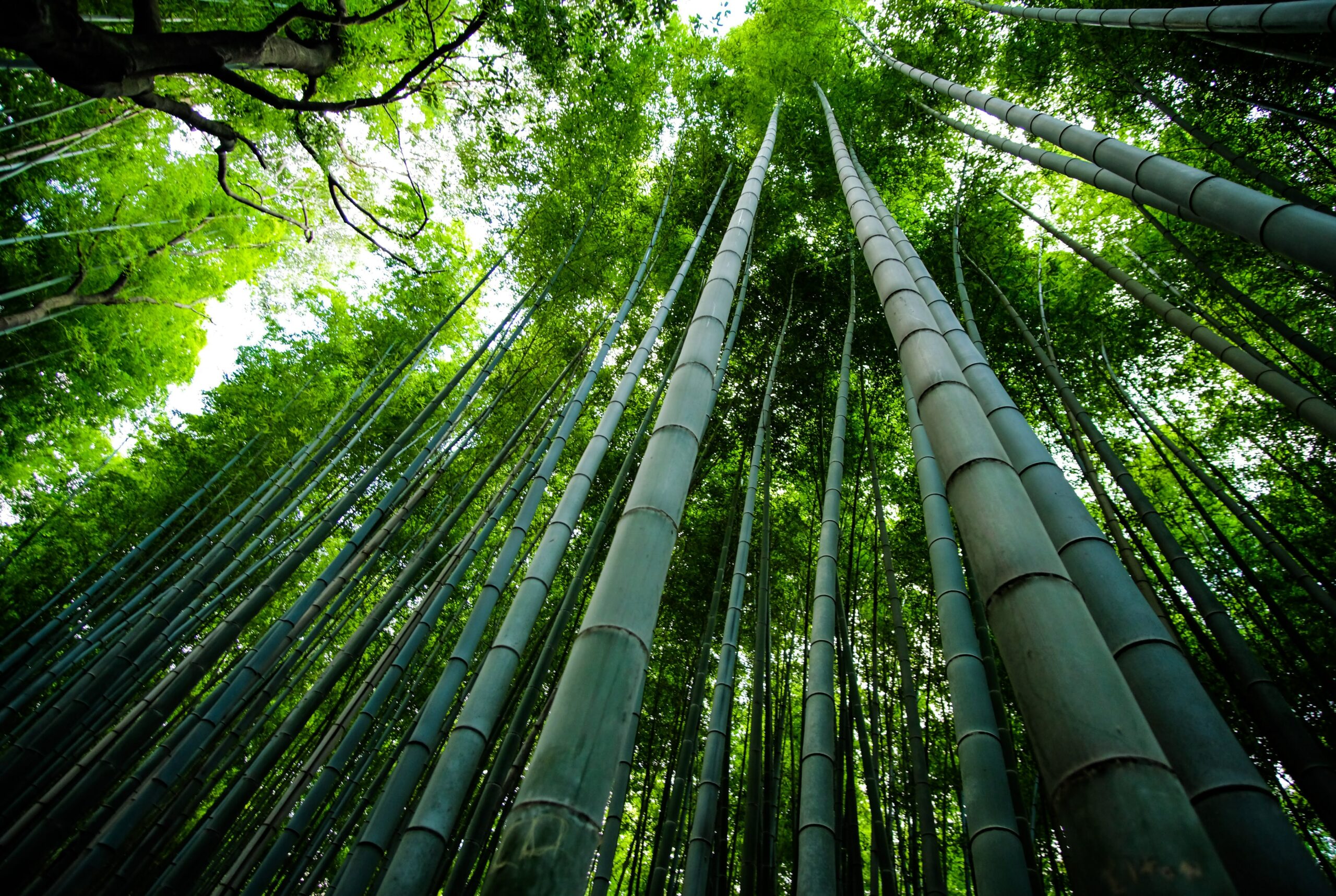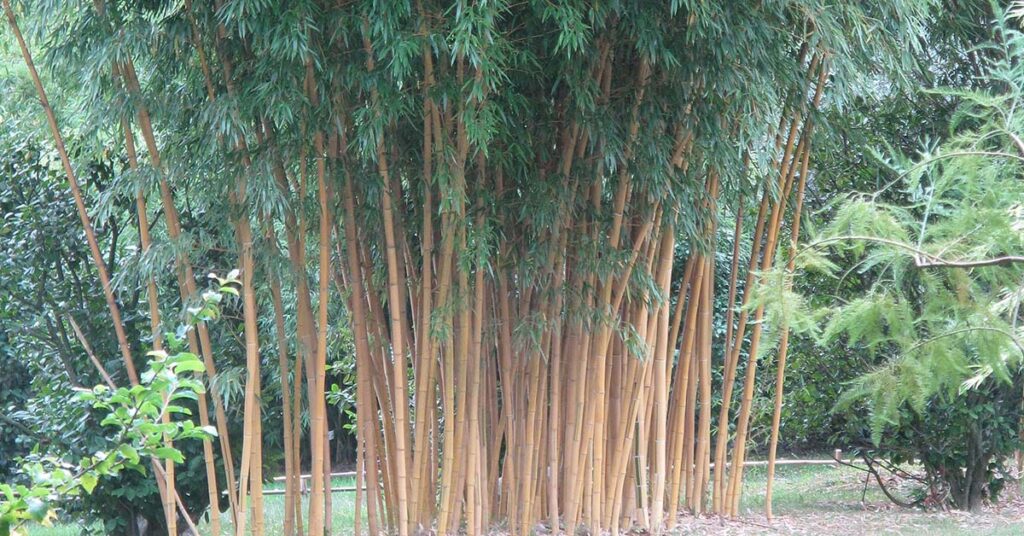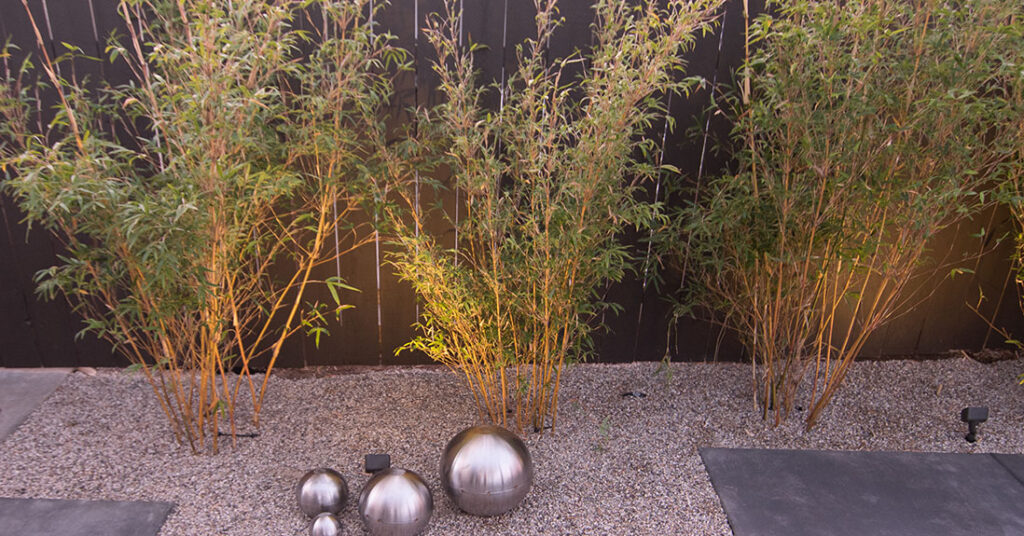Bamboo isn’t just a panda’s snack. It’s a beautiful and versatile plant that has many uses in the urban landscape.
You can install it as a privacy screening to block out nosy neighbors, or use it as a hedge. But, in my eyes, the biggest pro of all is how it can add architectural interest to a space, depending on which type you install—Black Bamboo (Phyllostachys nigra) for a modern edge, Alphonse Karr Bamboo (Bambusa multiplex ‘Alphonse Karr’) for a tropical twist, or Giant Timber Bamboo (Bambusa oldhamii) for an Asian-inspired accent, for examples.

Bamboo is part of the Poaceae family (pronounced poh-aye-see-aye). That’s the family that gave us many ornamental types of grass and your standard lawn grass. Crazy, right?
And just like ornamental grasses, it comes in many types.
Bamboos are generally divided into two groups: clumpers or runners, depending on how vigorously their rhizomes spread. (Rhizomes are above ground or near the surface stems that put out roots).
It’s important to know what kind you have, because if planted improperly or in the wrong spot this plant can really give you a headache. For instance, runners can be extremely invasive, if not maintained or installed properly. Thankfully, there are containment/root barriers to help with that. (My go-to is from Rhizome Barrier Supply.) Or to avoid maintenance nightmares entirely, consider sticking to clumping bamboos, which are far less invasive.
Now, let’s dig into each category, from the troublemaker to the well-mannered.
Runners

The name says it all: The roots on this type run and run fast. Runners are the most invasive species, and they will take over your yard and your neighbor’s yard if you don’t contain them properly. The rhizomes shoot out far from the basal clump and keep spreading.
A hack: Plant them in containers or use a 24- to 36-inch root barrier to contain spreading. Install the root barrier 2 inches above the soil, as their rhizomes trail along the top of the soil. Also, note that runners will spread a lot slower if they have less water to chase around it. I love to put them in 24- to 36-inch decorative pots in the landscape. My go-to types are Golden Bamboo (Phyllostachys aurea), Giant Japanese Timber Bamboo (Phyllostachys bambusoides), Black Bamboo (Phyllostachys nigra).
Clumpers

Clumpers are the most behaved of bamboo types. Kind of like a well-trained dog, they sit and stay where you put them. They grow in big clumps of grass, producing stalks right at the base of the mound and multiplying from there. These are the most low maintenance because they grow from a predicted spot (the base) so it’s easy to thin them back when you need to. These also are often used to screen out neighbors. Just be sure to use a root barrier, if you’re planting close to the property line. My favorite types are Giant Timber Bamboo (Bambusa oldhamii), Blue Bamboo (Himalayacalamus hookerianus ‘Teague’s Blue’), and Tropical Blue Bamboo (Bambusa chungii).
Bamboo Fact Sheet*
Evergreen: Yes, with regular leaf drop
Watering: Regular irrigation, and water deeply (less water will slow spreading)
Lighting: Full sun to part sun
Soil: Grows in a variety of soils
Maintenance: Cut back the rhizomes, pick up or blow leaves, or let self mulch
*care will vary with each variety





